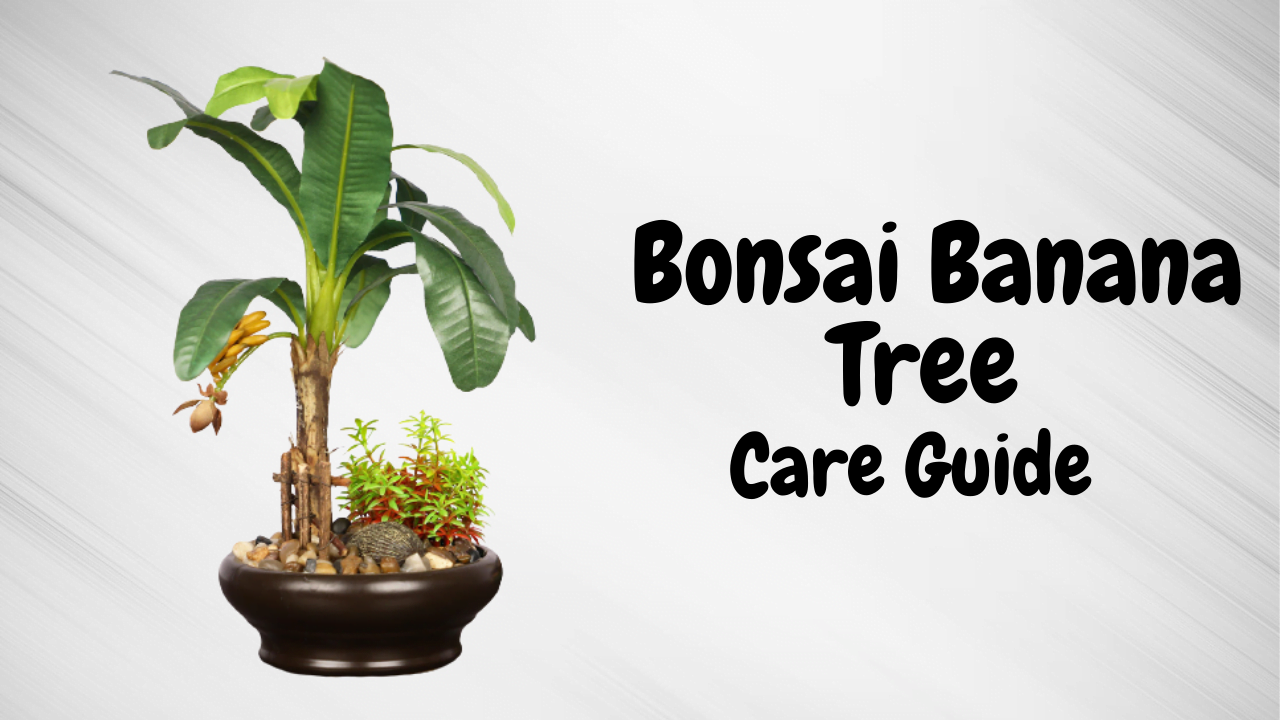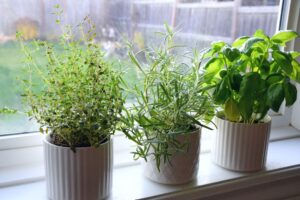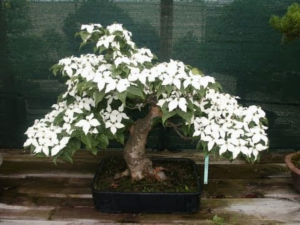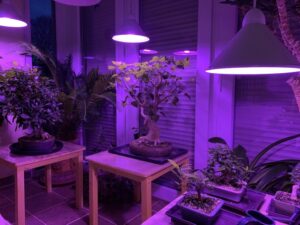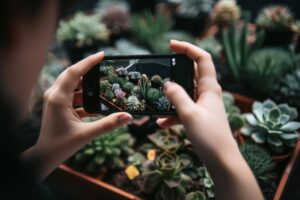Do you wish to plant fruit trees in your terrace garden?
But can you bonsai a fruit tree like a banana tree?
Of course, you can; in this article, we will plant bananas in a pot.
Growing banana bonsai at home is quite easy and more interesting than you think. And if you love bananas, then you will be thrilled to learn how to grow banana bonsai by yourself.
So, let’s begin
About Bonsai Banana
| Suitable Climate | A bonsai banana grows wells in tropical areas |
| Features | Bonsai banana has large and soft leaves, which makes it an ornamental houseplant. |
| Location | It is an excellent indoor bonsai plant. And people’s favorite because of less care requirement. |
| Height | 2-4 meters |
| Type of container | It can be grown in ceramic, wood, or plastic pots. |
| Size of container | 15 gallons (For optimal growth) |
| Sunlight | Full |
Buying an outdoor bonsai tree is a great way to add a unique and beautiful touch to your outdoor space. With a variety of species and sizes available, you can find an outdoor bonsai tree to suit any taste and space. However, it’s important to research the specific care requirements of your chosen tree to ensure it thrives in your outdoor environment. Shop around to find the perfect outdoor bonsai tree for you.
How to Grow Banana Tree at Home from Seeds
- Soak the banana seed in warm water for 24-48 hours, and it will break seed dormancy. After that seed coat will become soft, and the embryo will sprout out.
- Now fill the pot with soil mixture. Sow the banana seed one-fourth inch deep. And backfill with compost.
- Water the seeds until the soil gets moistened.
- For germination, maintain the temperature of 60 degrees Fahrenheit.
- After germinating the seeds, place them in a large container with good quality compost. Ensure that juvenile roots do not get damaged.
- The seeds may take 2-3 weeks or 2-3 months for germination. It usually depends on the banana variety.
- After 2-3 years, the banana tree can be transplanted.
How to Grow Banana Plants at Home from Corm
- Choose the dwarf variety of banana trees. Suitable varieties are Dwarf red, Dwarf Brazilian, Rajapuri, Dwarf Ladyfinger, Grain Nain, Dwarf Cavendish, Dwarf Jamaican, William’s hybrid.
- Wash banana corm with lukewarm water
- Take a shallow pot with a good drainage hole.
- Fill the pot with soil and dig a hole using a spatula about 3 inches (7.62 cm) deep.
- Plant the corm inside the dug hole and fill the sides with soil.
- 20% of the corm should be exposed until its leaves get developed.
- Cover the rest with compost once the shoot starts to grow from a corm.
- Water the Plant to moisten the soil. Do not overwet it. After watering, place it outside.
Care tips for Bonsai Banana Tree
1. Water and Sunlight
- Banana grows well in tropical and sub-tropical regions. So, find the spot that receives sunlight most of the day.
- Banana loves humidity, heat, and sunlight.
- Potted banana needs six to eight hours of direct sunlight each day.
- The ideal temperature for bananas is 78 to 86 degrees Fahrenheit.
- They need lots of water to keep their large leaves hydrated.
- Keep the soil moisture constant, do not let the soil dry out.
- Water twice a month during summer. And in winter, watering can be reduced.
- Notice when leaves turn yellow. It indicates a lack of nutrition. And brown and dry leaves are the sign of overwatering.
- In winter, the water should not be allowed to sit in the soil, it will rot the roots.
2. Temperature
- Despite being rainforest plants, Banana bonsai plants are resilient to a variety of temperatures.
- They thrive best in temperatures between 20°C and 30°C. So moderate home temperatures are fine for them.
- They can handle cooler temperatures in winter but should not be lower than 14°C.
- The lowest temperature a banana bonsai plant can handle is around 10°C. So, temperatures lower than this can harm the plant and hamper its growth.
- Compared to normal Banana plants, Musa Dwarf Cavendish can tolerate lower temperatures well.
3. Potting and repotting banana bonsai:
- Make sure that the pot has drainage holes, and use a loose, rich-in-organic matter potting mix.
- Banana bonsai trees tend to have higher moisture and feeding craves, as they will use up what is in their compacted soil quicker than banana trees in the ground.
- They probably won’t reach their highest length and might not produce fruit. But their big green leaves will give a great impression.
- You generally will have to split and repot container banana bonsai trees every three years, splitting any suckers from the parent plant.
4. Pest and Disease
- To protect the Plant from pests and disease, use organic pesticides.
- Apart from root rotting due to overwatering, bananas have no major problem of pests and disease.
- Minor problems like snails, earwigs, aphids, mealybugs, moths, fruit flies, or spider mites may crawl on your Plant. Use a strong spray of water to clear these insects.
- Fungal infection might occur, but it won’t kill the Plant.
- A severe problem is gophers (burrowing animals), whose digging can cause plants to fall over.
- If you see jelly-like fluid coming out from the plant, you may have black weevils that can be stopped with the usage of regular pesticides.
- Aphid insects are common and they cause twisted and shriveled foliage and can also spread other ailments that will affect the growth of the tree.
- Nematodes are the banana tree’s most common pests that will destroy the plant. Constant use of normal pesticides can cure the issue.
- Sap-sucking insects like small white mealybugs and red spider mites are also typical pests of banana bonsai trees and can be cured with rubbing alcohol or neem oil.
5. Winter Care Indoor
- During winter, continue to give as much sunlight as possible. Place the Plant in a southward direction.
- Place the banana plant inside when the outside temperature falls below 57 degrees Fahrenheit. At 50 degrees Fahrenheit, your Plant will start to die.
- The Plant growth slows down in winter so it won’t need much watering or fertilizer compared to summer.
- But maintain soil moisture. Fertilize it once a month.
- Move the Plant outside when the danger of frost is being passed.
6. Protection
- Protect the banana plant from frost, cold weather, and strong winds.
- To protect the Plant against the wind, place the pot next to a fence or sheltered area.
- To protect the Plant from cold weather, Set the pot in the warmest part of your yard or deck.
- Frost will kill the foliage, but rhizomes will survive if the soil is above 22 degrees Fahrenheit.
- Cover the Plant with a blanket or burlap (cloth made of fibres).
- Bring the Plant indoors in winter.
- To remove the dirt, The plant leaves should occasionally be wiped with a damp rag or sponge.
7. Soil and Fertilizer
- While the Plant is young, fertilize it with a nitrogen-rich fertilizer. After it gets mature, fertilize it regularly.
- Plant the banana in well-draining soil with plenty of humus.
- Put the layer of straw or mulch over the top of the soil to retain moisture.
- Provide additional nutrients to the Plant.
- During the summer growing season, fertilize the banana weekly.
- Banana houseplant requires more feeding during the growing season. For this, you can use balanced soluble fertilizer each month.
- If you can’t get soluble fertilizer, especially for tropical plants, use 20-20-20 fertilizer. (20% nitrogen, 20% phosphorus, and 20% potassium)
- Agrium, Haifa, PotashCorp, and Yara international are popular fertilizer companies.
8. Pruning
- After 6-8 weeks of healthy growth, the banana plant requires pruning.
- Pruning is also required when your tree starts to grow fruits.
- After harvesting fruit, prune down the tree to 2.5 feet. This will grow more fruits. Make sure not to damage the main sucker while pruning.
Key takeaways: Bonsai Banana plant care tip:
1) Nourish the plant with a ton of light. While most Banana plants prefer natural light, they also thrive in filtered bright light.
2) Check the soil regularly for the watering routine. It prefers moist soil and despises it when it dries out totally. If the top few inches are dry it’s a cue that they need water again.
3) Make sure the pot and the soil have good drainage. Bonsai banana plants love moist soil, but they don’t accept it if it is overly wet and the extra water can’t exit.
4) Frequently fertilize it. Due to its quick growth, it is a heavy feeder. It should be fertilized once or twice a month with liquid plant food.
5) Make sure the air around the plant is humid. Moisture in the air should be between 60-90%. The leaves will turn brown from the edge if the air is too dry.
6) Keep the temperature steady. It can tolerate various temperatures but the fluctuations are the worst. The result will put them under constant stress.
7) Sometimes clean the leaves. Clean all dust and debris collected over time with a damp cloth.
Conclusion
Banana is most popular in the tropical region. This is because the Plant loves sunlight, heat, and humidity. Generally, it is the source of food. In addition, many people prefer to grow bonsai bananas because of their less care and maintenance.
You can grow bananas at home from seeds or corm. Banana does not have many significant problems in pests and diseases. And minor problems can be prevented with insecticide spray.
Tell us in the comment which method you think is easy, seed or corm?
Related Articles
- 9 Herbs To Grow Indoors All Year Round
- Needles Drying Out On Juniper Bonsai- Causes, Signs, and Treatment.
- How To Grow And Care For Dogwood Bonsai
- All About Grow Light- Best Grow Lights For Your Bonsai In 2024
- White spots on the leaves?- Powdery mildew on bonsai (identification and solution).
- Innovative Bonsai Photography and Online Sharing

